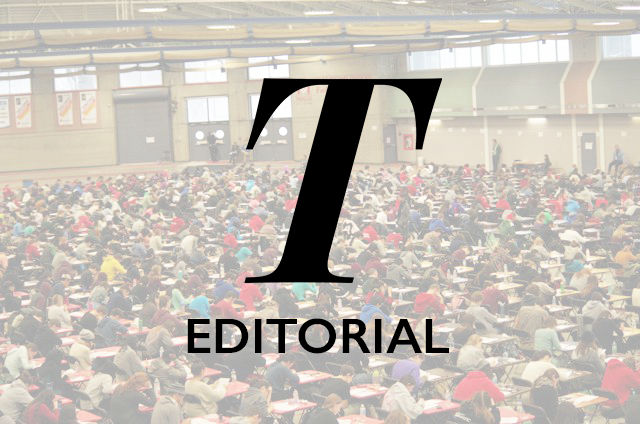As the end of term nears, students start scrambling to calculate the minimum grades they need to achieve on their final exams to pass their courses. Amidst the stress, the Satisfactory/Unsatisfactory (S/U) grading option offers some respite. Vice President (VP) University Affairs (UA) Jacob Shapiro wants to incentivize students to continue studying for their S/U classes, even when they’re guaranteed to pass. Shapiro is advocating for a change to the S/U system that would allow students to convert their ‘S’ grades back to regular letter grades. While Shapiro’s proposal sounds promising, an updated S/U policy alone cannot encourage students to take a variety of courses, and McGill must continue encouraging students to take classes that fall outside of their comfort zones.
Currently, during the add-drop period, students can opt to take elective courses through a model under which final grades are represented by either an ‘S’ if the student passed with a 55 per cent or above or a ‘U’ if the student failed. Neither option is reflected in a student’s GPA.
Shapiro’s proposal would allow students to switch their ‘S’ grade to whatever letter grade they would have received in the course under the normal grading scheme for up to two weeks after the release of their final mark. By suggesting this change, Shapiro hopes to incentivize students to fully engage with their elective courses. Similar options exist at other universities: Both Columbia and Yale have alternative S/U programs that allow students to ‘uncover’ their grade after they’ve received it.
On Nov. 1, the Students’ Society of McGill University (SSMU) Legislative Council voted to formally recognize Shapiro’s mandate to advocate for the proposal. However, Shapiro’s plan has some critics. The president of the Computer Science Undergraduate Society (CSUS) Kyle Rubenok believes it would privilege those who have the money to retake courses until they receive a higher grade. Dubious as this claim is, Shapiro still needs to refine his proposed changes to address other concerns, like devaluation of the ‘S’ mark and grade inflation. Shapiro’s plan risks undermining the purpose of the ‘S’ grade, as students who received high numerical grades will most likely uncover their grade to boost their GPA. This then suggests that students who choose to keep their ‘S’ did not receive a good grade in the first place. Additionally, Shapiro needs to clarify whether uncovering S/U grades would allow students to apply those courses to their major or minor, if they decided they liked the course and want to pursue further study in the field.
Moreover, the S/U policy alone is not enough to encourage students to take courses beyond their major and minor areas of study. McGill’s academic culture is highly competitive, incentivizing students to take easy courses that will boost their GPAs to supplement their resumes for future job searches and graduate school applications. Encouraging students to take electives outside of their programs will make their education more holistic, provide them with interdisciplinary skills, and even introduce students to subjects they didn’t expect to enjoy.
Shapiro’s proposed changes still have a long way to go before implementation. However, this does not mean that McGill cannot continue to prioritize interdisciplinary learning in the meantime. One standout example is the Bachelor of Arts & Science (BA & Sc.), a degree that is offered jointly by the Faculty of Arts and the Faculty of Science. McGill’s B.A.& Sc. program is relatively new, and it can look to McMaster’s BA & Sc., which offers courses unique to the program. McGill can also follow the lead of universities like Brown, New York University, and Northeastern, where students can design their own major program.
However, interdisciplinary programs at McGill, such as Liberal Arts, have limited enrollment; the North American studies program, which combined history, political science, and economics courses, was recently cut. McGill can continue to promote and refine interdisciplinary programs like Liberal Arts to increase student enrollment.
These examples demonstrate only a few of the ways in which McGill could continue to promote interdisciplinary learning. Its graduates will be better equipped for future employment or graduate studies if they are provided with a diverse array of skills. But students won’t branch out unless the accompanying incentives are realigned—and a new S/U option is an adjustment worth considering.









